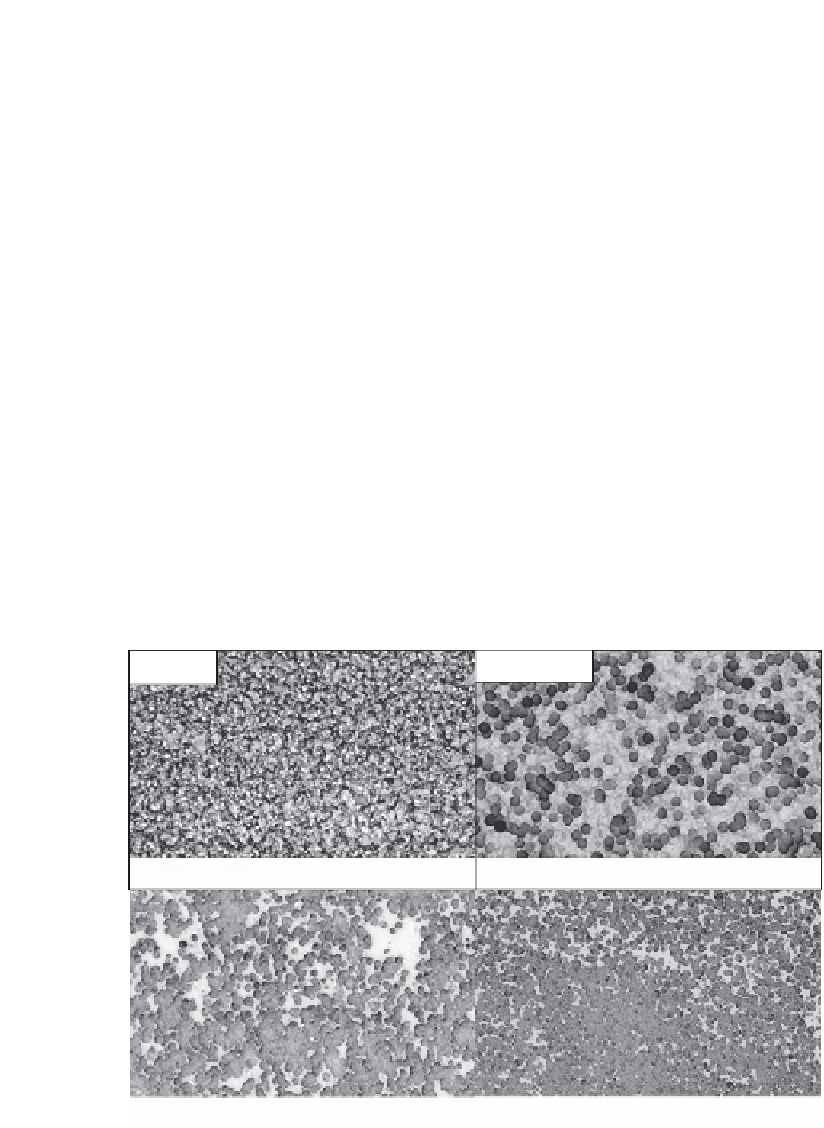Biomedical Engineering Reference
In-Depth Information
Work by Wang et al.
[59]
has shown Raman shift of diamond coating can be related to the cobalt
content in the WC substrate. Higher cobalt (10%) concentration of WC-Co dental bur shows com-
pressive stress in the diamond coating. However, in this work it is clear that variations in the film
thickness and crystal sizes are due to variation in the deposition temperature at various positions on
the bur.
15.3.3.2 Effect of Negative BEN on the Dental Bur
A negative bias voltage up to
300V was applied to the substrate relative to the filament using a gas
mixture of 3% CH
4
in H
2
at 20 Torr. This produced emission currents up to 200 mA. The nucleation
times used were between 10 and 30 min. The nucleation density of diamond was determined from
SEMs.
Figures 15.11 and 15.12
show the effects of the substrate bias time on the diamond nucleation
density. It is evident that as the bias time is increased, the nucleation density also increases. The high-
est nucleation density was calculated to be 9
10
9
cm
2
for a bias time of 30 min. At a bias time of
10 min, the nucleation density obtained was 5
10
8
cm
2
.
Figure 15.13
shows the variation of the emission current as a function of the negative bias applied
to the substrate holder where the bias emission current increased rapidly after
180V. Wang et al.
[59]
also reported that an increase in the emission current produced higher nucleation densities. Since
the bias voltage and emission current are related, the enhancement of the nucleation density cannot
be attributed to solely ion bombardment or electron emission of the diamond-coated molybdenum
10 min bias
No bias
20 kV
X3, 500
5
µ
m
20 kV
X3, 500
5
µ
m
30 min bias
20 min bias
20 kV
X3, 500
20 kV
X3, 500
5
µ
m
JEOL
5
µ
m
FIGURE 15.11
SEMs showing the effect of bias time on nucleation density on the WC bur.








